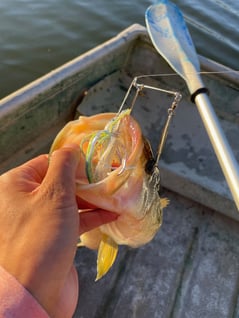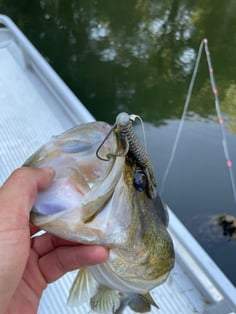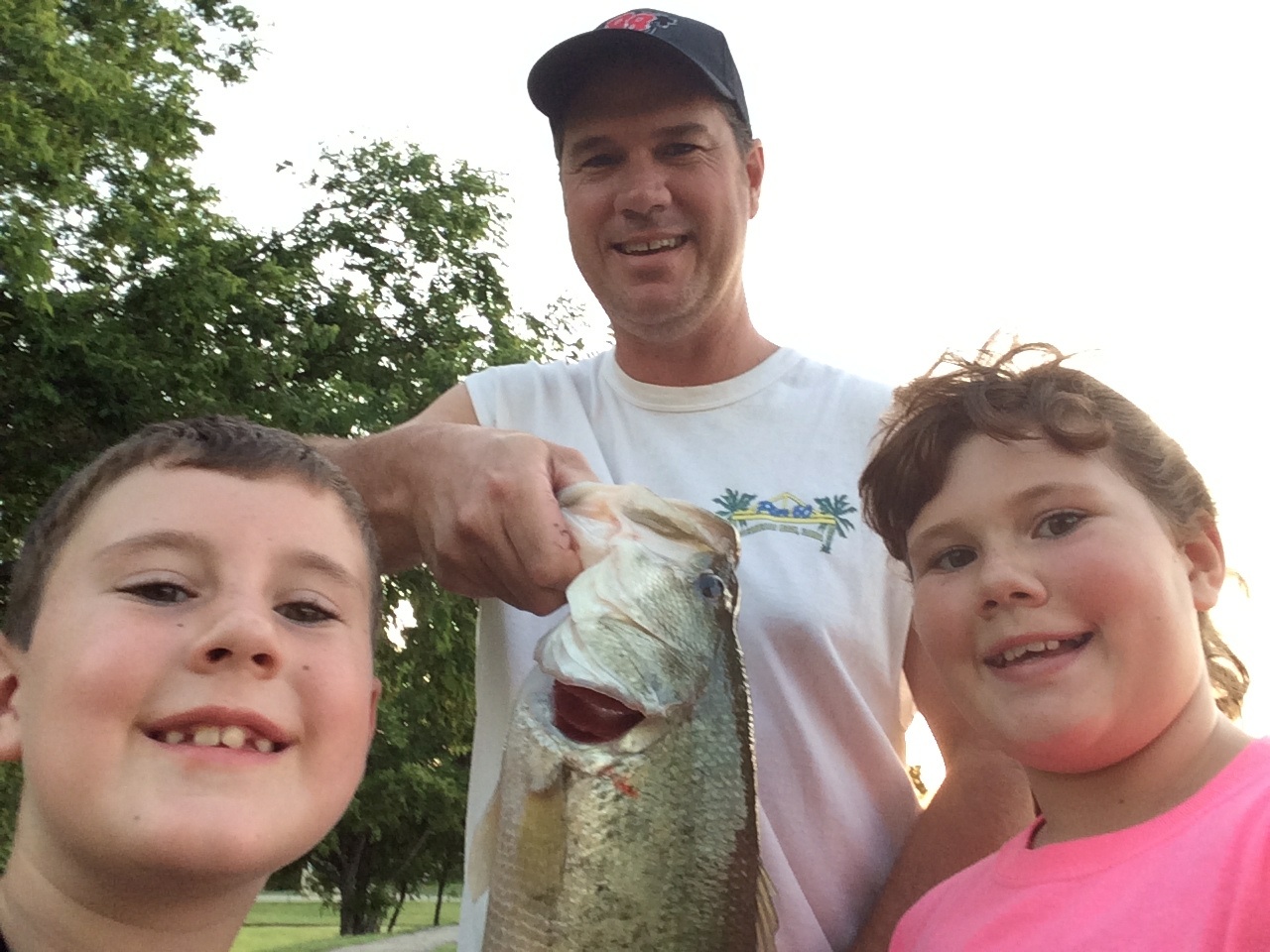I, myself, have searched bass fishing tips for beginners online and have felt overwhelmed and frustrated because things were written for people who most likely would not be searching the world wide web for fishing tips in the first place. Bass fishing can be a rewarding and exciting hobby, but it can also be challenging just starting out. I’ve done some research and talked with our fishing gurus and have put together 4 tips to help you get started and improve your fishing skills.
Top 4 Tips for Finding Largemouth Bass
Tip #1: Find the cover, you’ll find the fish
One of my kids’ favorite pastimes is playing hide and seek. They frequently ask to go to their KiKi and Pop’s house because they have the best hide and seek house in all the land. Think of this first tip as if you are playing hide and seek with the bass and you are trying to find the best hiding places in the land. They are hiding in the cover. Put your lure here and you will more than likely find them.

What is “Cover” for Bass?
Cover is just as it sounds, something that the bass can hide under, think: rocks, wood, boat docks, grass, lily pads, coontail, pondweed, etc.
Pro Lake Fishing Tip: Find a dam corner where shallow water meets deep water.
Tip #2: Match the Hatch
Bass are opportunistic predators and are willing to eat all kinds of things…so in other words, they are not picky when they are hungry…or hangry. Hangry or not, people and fish alike know what they like to eat and what brings them comfort. Toss something that entices them and/or mimics what they usually like to nom on in front of them, they’re more likely to bite.
What Does it Mean to “Match the Hatch?”
Matching the hatch directly relates to finding lures or baits that imitate what bass may be feeding on at the time or on that particular body of water.
Small farm ponds and private lakes often have an abundance of panfish and crawfish as the main source of bass forage. Whereas, large lakes and rivers bass may eat shad.
How Do I Match the Hatch?
If you aren’t sure what tickles the fancy of the bass in your area, I would ask your local tackle shop. Our local tackle shop, Lake Pro Tackle has put together a starter kit to help beginners fishing the waters in our area. These are hand curated by people that know what they are talking about, aka people that would not be researching bass fishing tips online.
 Pro Pond Fishing Tip: If you’re bass fishing in a pond, find out what forage fish the pond has been stocked with and use a lure similar to that - typically that will be:
Pro Pond Fishing Tip: If you’re bass fishing in a pond, find out what forage fish the pond has been stocked with and use a lure similar to that - typically that will be:
- Bluegill – use broad sided plastic Texas rig or crankbait
- Crayfish – use jigs
- Minnows/Golden Shiners – use small spinnerbait/swimbaits
Tip #3: Pay Attention to the Weather Conditions
The weather can play a huge role in your fishing trip being successful or not, so here are some tips for fishing under different weather conditions.
Cloudy Conditions
On overcast days you will want to choose a bait that is on the move. Bass will not be trying to hide on cloudy days because they do not need protection from the sun beating down on them. That means bass may be trickier to find because they are spread out and looking for food. Don’t chase them, attract them with fast moving baits like these: spinner baits, chatter baits, topwaters.
Sunny or High Pressure Days

“I was made for sunny days” would not be the life motto for a bass. Bass really aren’t about that life and will be hiding when it’s full sun (hint: go seek them in the shade areas).
Find the cover and throw a bottom bouncing bait.
Cold Days
Contrary to popular opinion (I work with a bunch of runners), when it is cold things are slower moving, including bass. The rate at which a bass burns calories to produce energy slows down as the water temperature decreases. As a result, bass require less food to survive through the winter.
Cooler temps = slow moving baits
Baits for Hot Temperatures and Dog Days of Summer
During the summer, many small forage fish are present. Shad had spawned in the spring and bluegill spawn throughout the summer. Imitation of these forage fishes to match the hatch is a popular approach.
A summertime staple in bass fishing is a large ribbon tail worm. This large profile fished slow provides a large meal to suit the increased metabolic needs while aiding the lethargic nature of environmentally stressed bass.
If you want to catch a bass in the heat of summer, put on a good ol’ fashioned 10+” worm.
Windy
If you follow the life mantra, “Go wherever the wind blows” you better hope it blows you all the way to the pond to get some good fishing in with fast baits, spinnerbaits and crankbaits. Don’t let a little breeze deter you from casting, because bass will annihilate them on these days.
Why are Windy Days Good for Fishing?
Windy days will cause the surface of the water to be disturbed, surface disruption lowers predation rates which allows fish to feel safe shallower, especially forage fish. Wind also moves a lot of nutrients around and helps conceal you and your baits because they look more natural, all in turn attracting bass to these wind-blown areas.
Tip #4: Bad Line and/or a Poor Knot Can Cost You the Catch of a Lifetime
Straight from the mouth of our in-house knot nut, practice makes perfect. To prevent having to tell a sad story of an almost catch of a lifetime, be sure to master tying a good knot, and good line on your rod and reel. Old line becomes weak and gets broken down by UV lights leading to weaker knot strength.
Good Knots for Bass Fishing
Here are some simple knots that work well:
Pro Fishing Tip: Be sure to check your line for fraying after you’ve been stuck/snagged on a tree or other object (it will happen often as that’s where the fish are!) If your line becomes frayed, snip it off past the fray so you’re tying a new knot on good, solid line.

Bass fishing can be a waiting game, so it’s important to be patient and keep trying different techniques until you find what works.
Don’t get discouraged if you don’t catch anything right away – it is called “fishing”, not “catching” for a reason – but, the more you practice, the better you’ll get. By following these beginner fishing tips and tricks, you’ll be well on your way to becoming a successful bass fisherman. Happy fishing!
Contact Pond King for Private Pond Stocking
Pond King is the industry leader for private pond and lake management. Our fisheries biologists have extensive experience helping landowners create the fishing experience of their dreams. Give our team a call or contact us today to find out more about stocking your pond with bass.




